Events
Recent additions to this website
Discover Thomas Heywood’s Troia Britanica: the first unabridged, annotated, modern-spelling edition of Heywood’ 17-canto epic, which journeys from the origins of the world, covers the Trojan war, and moves through the history of Britain from its myths of origins to the reign of James I of England: more than 1700 stanzas, more than 8000 lines, over 5000 notes.
Also, feel free to browse the bibliography, which is regularly updated.
Just Out
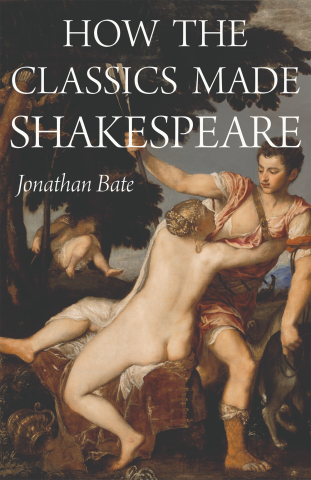 Jonathan Bate. How the Classics Made Shakespeare. Princeton: Princeton University Press, 2019. ISBN 9780691161600. 384pp. $24.95.
Jonathan Bate. How the Classics Made Shakespeare. Princeton: Princeton University Press, 2019. ISBN 9780691161600. 384pp. $24.95.
Ben Jonson famously accused Shakespeare of having “small Latin and less Greek.” But he was exaggerating. Shakespeare was steeped in the classics. Shaped by his grammar school education in Roman literature, history, and rhetoric, he moved to London, a city that modeled itself on ancient Rome. He worked in a theatrical profession that had inherited the conventions and forms of classical drama, and he read deeply in Ovid, Virgil, and Seneca. In a book of extraordinary range, acclaimed literary critic and biographer Jonathan Bate, one of the world’s leading authorities on Shakespeare, offers groundbreaking insights into how, perhaps more than any other influence, the classics made Shakespeare the writer he became.
Revealing in new depth the influence of Cicero and Horace on Shakespeare and finding new links between him and classical traditions, ranging from myths and magic to monuments and politics, Bate offers striking new readings of a wide array of the plays and poems. At the heart of the book is an argument that Shakespeare’s supreme valuation of the force of imagination was honed by the classical tradition and designed as a defense of poetry and theater in a hostile world of emergent Puritanism.
Rounded off with a fascinating account of how Shakespeare became our modern classic and has ended up playing much the same role for us as the Greek and Roman classics did for him, How the Classics Made Shakespeare combines stylistic brilliance, accessibility, and scholarship, demonstrating why Jonathan Bate is one of our most eminent and readable literary critics.
More at: https://press.princeton.edu/titles/13461.html
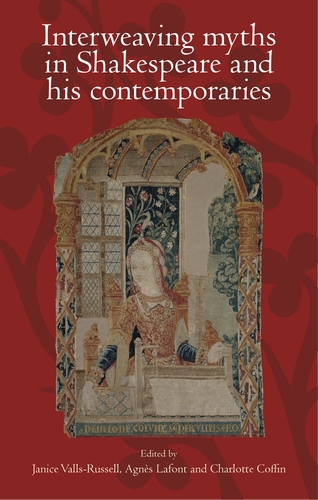
Janice Valls-Russell, Agnès Lafont and Charlotte Coffin (eds). Interweaving Myths in Shakespeare and his Contemporaries. Manchester: Manchester University Press, 2017. ISBN 978-1-5261-1768-7. 304pp. £75.00.
This volume proposes new insights into the uses of classical mythology by Shakespeare and his contemporaries, focusing on interweaving processes in early modern appropriations of myth. Its 11 essays show how early modern writing intertwines diverse myths and plays with variant versions of individual myths that derive from multiple classical sources, as well as medieval, Tudor and early modern retellings and translations. Works discussed include poems and plays by William Shakespeare, Christopher Marlowe and others. Essays concentrate on specific plays including The Merchant of Venice and Dido, Queen of Carthage, tracing interactions between myths, chronicles, the Bible and contemporary genres. Mythological figures are considered to demonstrate how the weaving together of sources deconstructs gendered representations. New meanings emerge from these readings, which open up methodological perspectives on multi-textuality, artistic appropriation and cultural hybridity.
Introduction: ‘Ariachne’s broken woof’ - Janice Valls-Russell, Agnès Lafont and Charlotte Coffin
1. Shakespeare’s mythological feuilletage: A methodological induction - Yves Peyré
2. The non-Ovidian Elizabethan epyllion: Thomas Watson, Christopher Marlowe, Richard Barnfield - Tania Demetriou
3. ‘This realm is an empire’: Tales of origins in medieval and early modern France and England - Dominique Goy-Blanquet
4. Trojan shadows in Shakespeare’s King John - Janice Valls-Russell
5. Venetian Jasons, parti-coloured lambs and a tainted wether: Ovine tropes and the Golden Fleece in The Merchant of Venice - Atsuhiko Hirota
6. Fifty ways to kill your brother: Medea and the poetics of fratricide in early modern English literature - Katherine Heavey
7. ‘She, whom Jove transported into Crete’: Europa, between consent and rape - Gaëlle Ginestet
8. Subtle weavers, mythological interweavings and feminine political agency: Penelope and Arachne in early modern drama - Nathalie Rivère de Carles
9. Multi-layered conversations in Marlowe’s Dido, Queen of Carthage - Agnès Lafont
10. Burlesque or neoplatonic? Popular or elite? The shifting value of classical mythology in Love’s Mistress - Charlotte Coffin
11. Pygmalion, once and future myth: Instead of a conclusion - Ruth Morse
Index
More at: http://www.manchesteruniversitypress.co.uk/9781526117687/
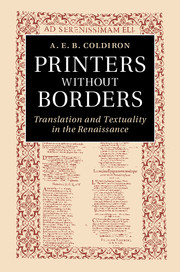
A. E. B. Coldiron. Printers Without Borders: Translation and Textuality in the Renaissance. Cambridge: Cambridge University Press, 2015. ISBN 9781107073173. 339pp. £65.00.
“The first book printed in English was not printed in England” and it was not an original English text: William Caxton’s Recuyell of the Historyes of Troye, printed in Bruges in 1473, was an “englishing” of the Burgundian author Raoul Lefèvre’s Recoeil, itself a medieval mediation of a foundational myth, the history of Troy, which enjoyed great popularity in Tudor, Elizabethan and Jacobean literature, political rhetoric and royal dynastic discourses. Caxton’s translation, repeatedly reprinted during the 15th and 16th centuries, contributed to fashioning early modern reception of the myth. A. E. B. Coldiron investigates the continental dimensions of this Englishing, and how printers and translators contributed to such forms of appropriation and acculturation, “performed by means of verbal translation and material-textual mediation. More
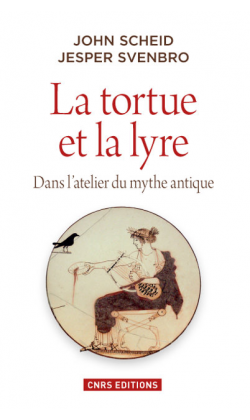
John Scheid and Jesper Svenbro. La tortue et la lyre: Dans l’atelier du mythe antique. Paris, CNRS Éditions, 2014. ISBN 978-2-271-07883-4. 229pp. €22.00.
How were Greek myths elaborated? How can we understand them? What critical tools can help us develop a pragmatic approach towards “a poetics of myth”? Such are some of the questions to which John Scheid and Jesper Svenbro offer new answers in their exploration of “the workshop” of the myths of Antiquity. Their inquiry, which started in their preceding book, Le métier de Zeus: Mythe du tissage et du tissu dans le monde gréco-romain (Paris: La Découverte, 1994; rep. Paris: Errance, 2003), is not only continued, but deepened and strengthened in La tortue et la lyre. Read a review on this website.
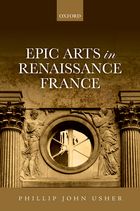
Phillip John Usher. Epic Arts in Renaissance France. Oxford, Oxford University Press, 2014. ISBN 978-0-19-968784-8. xii+254pp. £60.00 (hb).
This richly documented investigation into Renaissance France’s ‘intense relationship between epic and art’ (205) engages epic texts in a dialogue with their visual sister arts: programmes are considered, such as the Fontainebleau gallery which glorified François Ier and epic texts such as Dolet’s Fata, which refashion classical epic material. Ronsard’s Franciade was ‘part of both a national and a royal project and in constant dialogue with other arts’ (159), inspiring a series of paintings by Dubreuil for Henri IV. This dialogue implies rapprochements, ‘textualisations’ but also differing perspectives, within the French arts but also between French and other European artists and poets. The author recreates visual ambiences, and documents how they would have appeared to sixteenth-century viewers, so as to help his readers glimpse ‘the inside spaces as they would have been visible’ (175) then and understand how this epic art would have been read.
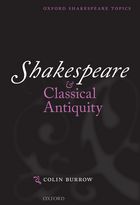
Colin Burrow. Shakespeare and Classical Antiquity. Oxford University Press, 2013. ISBN 978-0-19-968479-3. 296p. £16.99.
Shakespeare and Classical Antiquity shows the range, extent and variety of Shakespeare's responses to classical antiquity. Individual chapters on Virgil, Ovid, Classical Comedy, Seneca, and Plutarch show how Shakespeare's understanding of and use of classical authors, and of the classical past more generally, changed and developed in the course of his career. Read a review on this website.
Event
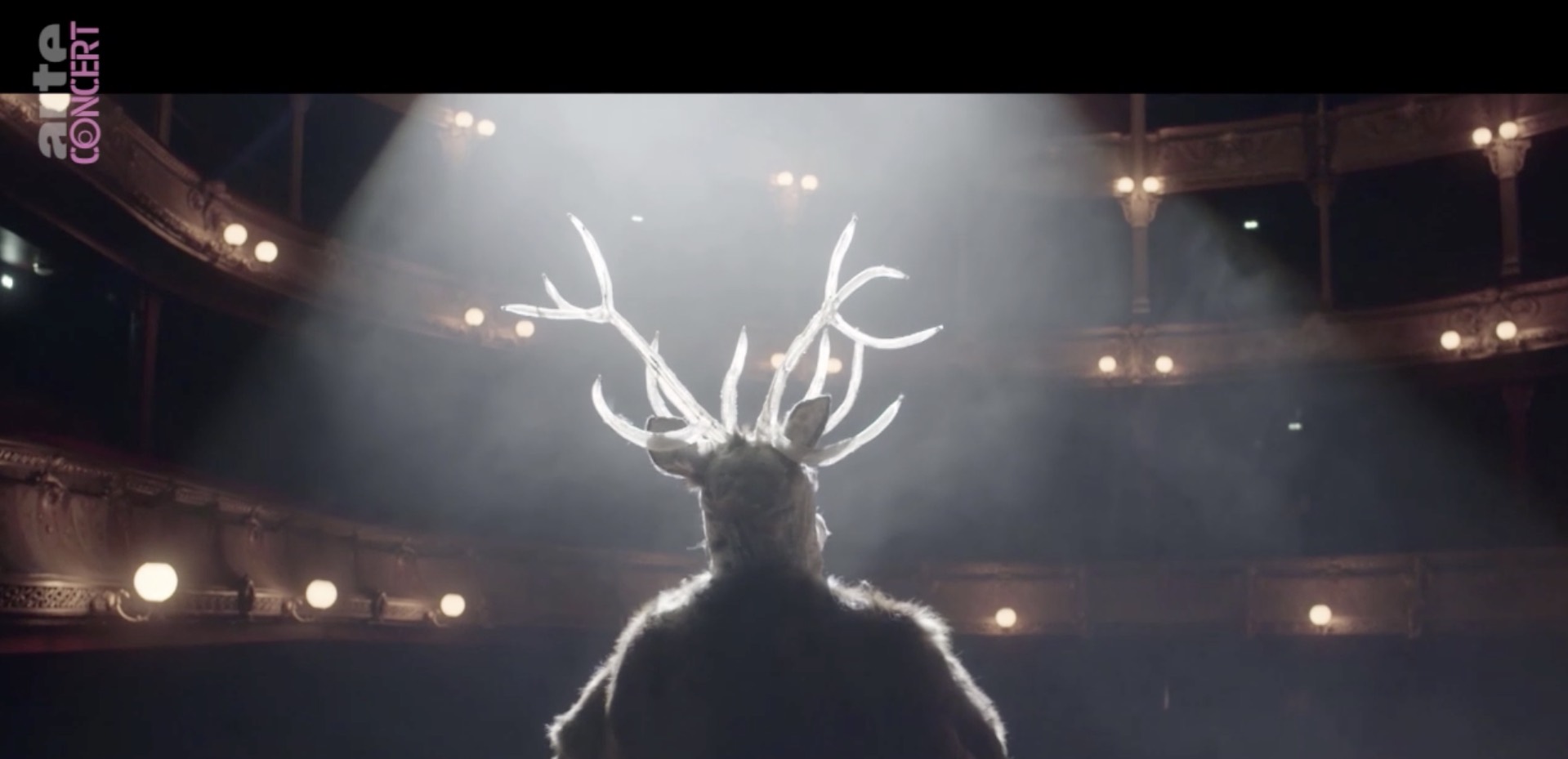
Actéon — Marc-Antoine Charpentier (c. 1684)
Théâtre du Châtelet, Paris
This production of Marc-Antoine Charpentier’s “Hunting Opera” in six scenes, retracing the story of Acteon in Ovid’s Metamorphoses, is directed by Benjamin Lazar. It was filmed in a single sequence shot in December 2020 in the Théâtre du Châtelet during the closure of the theatres.
The filmed version (directed by Corentin Leconte) is available on arte.TV from 16 February 2021 through 19 January 2022.This elegant, sensitive version of the opera is framed by a single “spectator” in the empty theatre, whose solitariness mirrors Acteon’s after his transformation. The music and singers (conducted by Geoffroy Jourdain) are well served by the stripped-back design, consisting essentially of a backcloth reproducing Le Douanier Rousseau's “Jaguar attacking a horse” in 1910, and soft lighting.
On Acteon in Shakespeare and his contemporaries, see Agnès Lafont’s entry in this dictionary: http://shakmyth.org/myth/4/actaeon
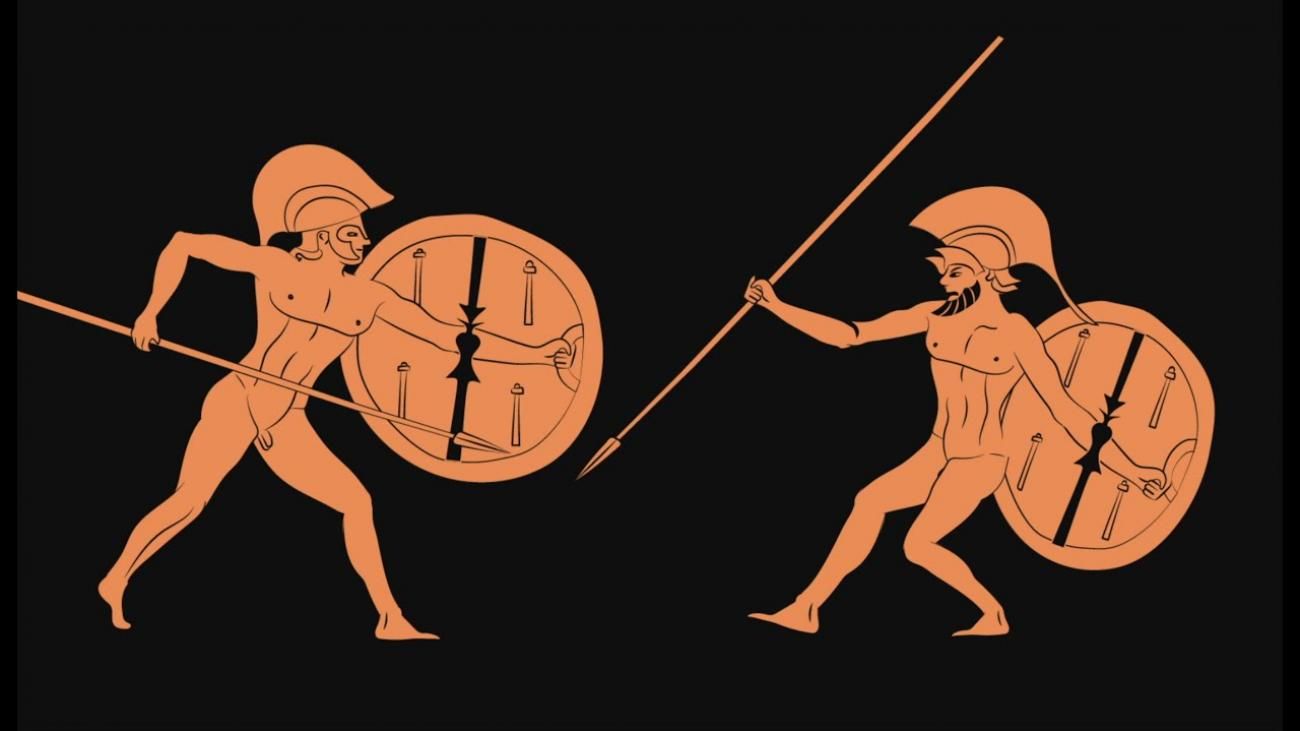
Troy: Myth and reality
British Museum, London
Exhibition: 21 November 2019—8 March 2020
The legend of Troy has endured for more than 3,000 years.
The story of a great city, plunged into a 10-year war over the abduction of the most beautiful woman in the world, is irresistibly dramatic and tragic. This allure has sent adventurers and archaeologists in quest of the lost city, which is now widely believed to have existed.
But what of the heroes and heartbroken, women and wanderers, who are said to have played a part in the Trojan War? Why have they inspired so many retellings, from Homer to Shakespeare to Hollywood?
More information here.

Website of the Week (WoW) #157 (4 August 2014): A Dictionary of Shakespeare’s Classical Mythology
“This website is an ongoing research project on the interactions of Shakespeare and his contemporaries with classical mythology and includes not only a dictionary of mythological figures referenced in Shakespeare’s works but also Early English Mythological Texts, and Studies in Early Modern Mythology, an online collection of peer-reviewed essays.”
Visit MLA International Bibliography’s Facebook page
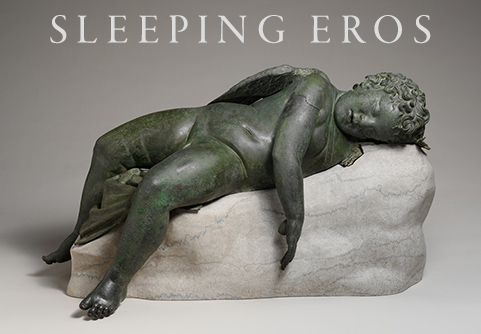 Sleeping Eros at the Metropolitan Museum of Art
Sleeping Eros at the Metropolitan Museum of Art
January 29–June 23, 2013
The exhibition is organised around the Metropolitan’s bronze statue Sleeping Eros, which seems to have been among the most popular ever produced in Roman Imperial times. It was also among the earliest of the ancient statues rediscovered during the Renaissance, when artists revisited the theme.
More information at netmuseum.org
 Metamorphosis: Titian - 2012
Metamorphosis: Titian - 2012
A major celebration, organised by the National Gallery, of Titian’s mythological works, inspired by Ovid’s Metamorphoses.
This year-long celebration will be in two stages:
1/ “Diana and Actaeon” on Tour in the UK from the National Gallery
Titian’s celebrated painting, “Diana and Actaeon” (1556-1559), which tells the story from Book III of Ovid’s Metamorphoses, goes on tour to:
• Walker Art Gallery, Liverpool (13 January – 26 February 2012)
• Norwich Castle Museum and Art Gallery (3 March – 15 April 2012)
• National Museum Cardiff (19 April – 17 June 2012)
More about the touring exhibition
More about Titian’s “Diana and Actaeon”
2/ Metamorphosis: Titian (11 July - 23 September 2012)
The painting returns to the National Gallery in time for the exhibition Metamorphosis: Titian 2012.
The exhibition will focus on three of Titian’s Ovidian paintings: “Diana and Actaeon”, “The Death of Actaeon” (1559-1575) and “Diana and Callisto” (1556-1559), which depicts another episode involving Diana from Ovid’s Metamorphoses (Book II).
The idea behind the event is a creative celebration of Ovid’s poetry and Titian’s art. Leading British choreographers, dancers, poets, composers and artists have been invited to respond both to Ovid’s text and Titian’s paintings. Events include readings, showcasing set designs for three new ballets and a special performance at the Royal Opera House on 16 July 2012 that will relayed on a large screen on Trafalgar Square.
New Books
 The Oxford History of Classical Reception in English Literature. Volume 5: After 1880. Edited by Kenneth Haynes. Oxford University Press, 2019. ISBN: 9780199585106. 736 pages. £140.00.
The Oxford History of Classical Reception in English Literature. Volume 5: After 1880. Edited by Kenneth Haynes. Oxford University Press, 2019. ISBN: 9780199585106. 736 pages. £140.00.
This volume rounds off the series:Volume 1: 800–1558. Edited by Rita Copeland.
Volume 2: 1558-1660. Edited by Patrick Cheney and Philip Hardie.
Volume 3: 1660-1790. Edited by David Hopkins and Charles Martindale.
Volume 4: 1790-1880. Edited by Norman Vance, Jennifer Wallace.
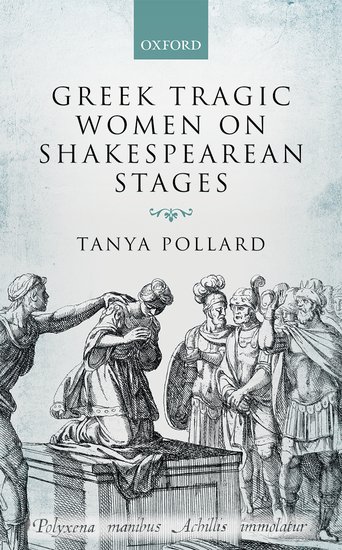
Tanya Pollard. Greek Tragic Women on Shakespearean Stages. Oxford: Oxford University Press, 2017. ISBN 9780198793113. 352 pp. £60.00 (hb).
Greek Tragic Women on Shakespearean Stages argues that ancient Greek plays exerted a powerful and uncharted influence on early modern England's dramatic landscape. Drawing on original research to challenge longstanding assumptions about Greek texts’ invisibility, the book shows not only that the plays were more prominent than we have believed, but that early modern readers and audiences responded powerfully to specific plays and themes. The Greek plays most popular in the period were not male-centered dramas such as Sophocles’ Oedipus, but tragedies by Euripides that focused on raging bereaved mothers and sacrificial virgin daughters, especially Hecuba and Iphigenia. Because tragedy was firmly linked with its Greek origin in the period’s writings, these iconic female figures acquired a privileged status as synecdoches for the tragic theater and its ability to conjure sympathetic emotions in audiences. When Hamlet reflects on the moving power of tragic performance, he turns to the most prominent of these figures: “What's Hecuba to him, or he to Hecuba/ That he should weep for her?”
Through readings of plays by Shakespeare and his contemporary dramatists, this book argues that newly visible Greek plays, identified with the origins of theatrical performance and represented by passionate female figures, challenged early modern writers to reimagine the affective possibilities of tragedy, comedy, and the emerging genre of tragicomedy. More
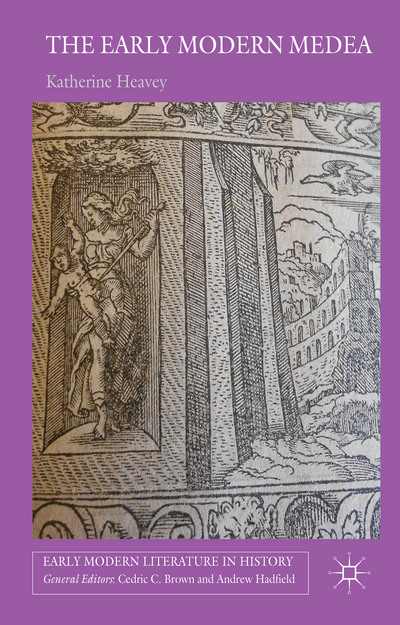
Katherine Heavey. The Early Modern Medea: Medea in English Literature, 1588-1688. London: Palgrave Macmillan, 2015. ISBN 9781137466341. 272pp. £55.00 (hb).
The classical witch and infanticide Medea was a figure of potent interest to early modern English authors, and she was adapted or alluded to by a wealth of major and lesser-known writers in the period, including Shakespeare, Jonson, Spenser, James Shirley and Robert Greene. Medea's story was a significant one for early modern translators, but the bloody revenge she takes on her faithless husband Jason also fascinated authors of tragedy, political writing and even comedy. This is the first book-length study of early modern English approaches to Medea, in the period 1558 -1688. Read a review on this website.
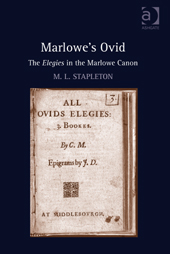
Michael L. Stapleton. Marlowe’s Ovid: The Elegies in the Marlowe Canon. Farnham, Ashgate, 2014. ISBN 978-1-4724-2494-5. 261pp. £65.00 (hb).
Many critical studies of early modern English (and European) Ovidianism tend to focus, almost exclusively, on the admittedly decisive importance of the Metamorphoses. Michael L. Stapleton’s research consistently offers an invaluable contribution to the field by usefully drawing attention to the significant impact of Ovid’s other works as well. While Spenser’s Ovidian Poetics (Newark: University of Delaware Press, 2009) demonstrates the influence of the entire Ovidian corpus on Spenser’s poetics, the last chapter of Harmful Eloquence: Ovid’s Amores from Antiquity to Shakespeare (Ann Arbor: The University of Michigan Press, 1996) explores what Shakespeare’s Sonnets owe to Marlowe’s translation of Ovid’s Amores, which is considered here as a “formative intertext”, one that helps shape the literary characteristics of another text. Read a review on this website.
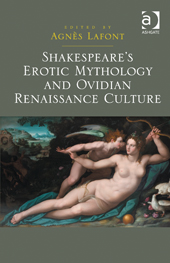 Agnès Lafont (ed.). Shakespeare’s Erotic Mythology and Ovidian Renaissance Culture. Ashgate, 2013. ISBN 978-1-4094-5131-0. 224p. £55.00.
Agnès Lafont (ed.). Shakespeare’s Erotic Mythology and Ovidian Renaissance Culture. Ashgate, 2013. ISBN 978-1-4094-5131-0. 224p. £55.00.
Taking cross-disciplinary and comparative approaches to the volume’s subject, this exciting collection of essays offers a reassessment of Shakespeare’s erotic and Ovidian mythology within classical and continental aesthetic contexts. Through extensive examination of mythological visual and textual material, scholars explore the transmission and reinvention of Ovidian eroticism in Shakespeare’s plays to show how early modern artists and audiences collectively engaged in redefining ways of thinking pleasure.
Contributors: Ilaria Andreoli, Sarah Annes Brown, Frédéric Delord, Agnès Lafont, Jane Kingsley-Smith, François Laroque, Yves Peyré, Stuart Sillars, Marguerite Tassi, Janice Valls-Russell. More
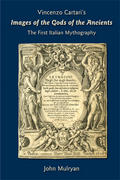 Vincenzo Cartari’s Images of the Gods of the Ancients: The First Italian Mythography. Translated and edited by John Mulryan. Arizona Center for Medieval and Renaissance Studies, 2012. ISBN: 978-0-86698-444-7. 442 + xxxvi pp. 22 ills. $90, £65.
Vincenzo Cartari’s Images of the Gods of the Ancients: The First Italian Mythography. Translated and edited by John Mulryan. Arizona Center for Medieval and Renaissance Studies, 2012. ISBN: 978-0-86698-444-7. 442 + xxxvi pp. 22 ills. $90, £65.
An annotated edition of the original Italian text of Cartari’s Le Imagini de i dei de gli antichi (1556) was published in 1996 by Ginetta Auzzas, Federica Martignano, Manlio Pastore Stocchi and Paola Rigo (Neri Pozza Editore). Mulryan’s edition provides the first complete English translation of this influential work, written in Italian and illustrated with images, that circulated throughout Renaissance Europe. Mulryan’s translation is illustrated with images from the Padua 1608 edition which, the title page proclaimed, was “an extremely useful work for historians, poets, painters, sculptors, and professors of polite literature”.
More on the website of the Arizona Center for Medieval and Renaissance Studies
 William Weaver. Untutored Lines: The Making of the English Epyllion. Edinburgh: Edinburgh University Press, 2012. ISBN: 9780748644650. 232p. £65.00.
William Weaver. Untutored Lines: The Making of the English Epyllion. Edinburgh: Edinburgh University Press, 2012. ISBN: 9780748644650. 232p. £65.00.
The English epyllion, the highly erotic mythological verse that swept the London literary scene in the 1590s, is as much about rhetoric as about sex. So argues William Weaver in this fascinating study of Renaissance education and poetry. Rhetoric, moreover, is erotic. More
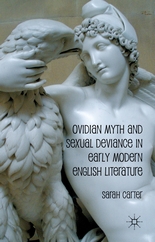
Sarah Carter. Ovidian Myth and Sexual Deviance in Early Modern English Literature. London and New York: Palgrave Macmillan, 2011. ISBN: 9780230244238. 224p. £50.00.
Sarah Carter explores early modern culture's reception of Ovid through the manipulation of Ovidian myth by creative writers such as Shakespeare, Middleton, Heywood, Marlowe, Lyly and Marston. She analyses the strong cultural presence of particular myths and mythic characters involving potentially ideologically deviant sexual behaviour, including sexual violence, homosexuality, hermaphroditism and incest, in the myths of Philomela, Lucrece, Ganymede, Hermaphroditus, Pygmalion, Myrrha and Adonis. Contents
Luisa Capodieci, Philip Ford (eds). Homère à la Renaissance - Mythe et transfigurations. Paris: Académie de France à Rome / Somogy Editeur, 2011. ISBN: 978-2-7572-0419-1. 470p. €25.
The literary impact of the circulation of Homer’s poems in the 15th and 16th centuries has received more attention than their influence in the arts. This cross-disciplinary volume brings together specialists from different fields to study how Renaissance culture drew on the material of Homer’s myths. Contents
Denis Knoepfler. La Patrie de Narcisse. Paris: Odile Jacob, 2010.
This book, by a leading epigraphist (D. Knoepfler holds a chair at the Collège de France), is a fascinating, erudite and eminently readable archeological quest in search of pre-Ovidian Narcissus.
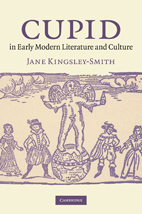 Jane Kingsley-Smith. Cupid in Early Modern Literature and Culture. Cambridge: Cambridge University Press, 2010.
Jane Kingsley-Smith. Cupid in Early Modern Literature and Culture. Cambridge: Cambridge University Press, 2010.
Covering a wide variety of material such as paintings, emblems and jewellery, but focusing mainly on poetry and drama, including works by Sidney, Shakespeare, Marlowe and Spenser, Kingsley-Smith illuminates the Protestant struggle to categorise and control desire and the ways in which Cupid disrupted this process. An original perspective on early modern desire, the book will appeal to anyone interested in the literature, drama, gender politics and art history of the English Renaissance.
More information on the website of CUP.
Danièle Auger and Charles Delattre, eds. Mythe et fiction. Paris: Presses Universitaires de Paris Ouest, 2010. ISBN 9782840160441. 410 p. €23. Contents.
Michelle Szkilnik, Laurence Harf-Lancner and Laurence Mathey-Maille (ed.). Ovide métamorphosé, Les lecteurs médiévaux d’Ovide. Paris: Presses Sorbonne Nouvelle, 2009. Contents.



